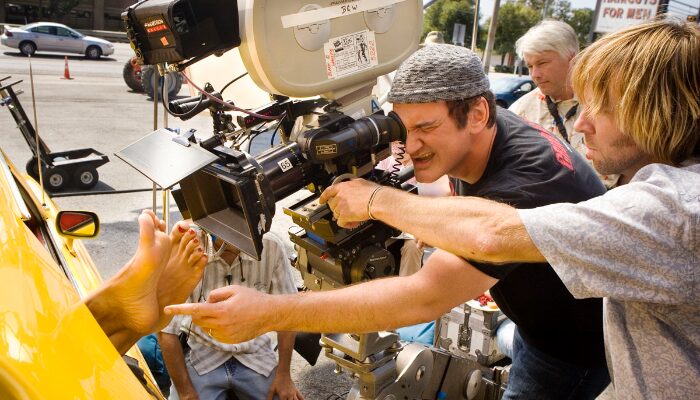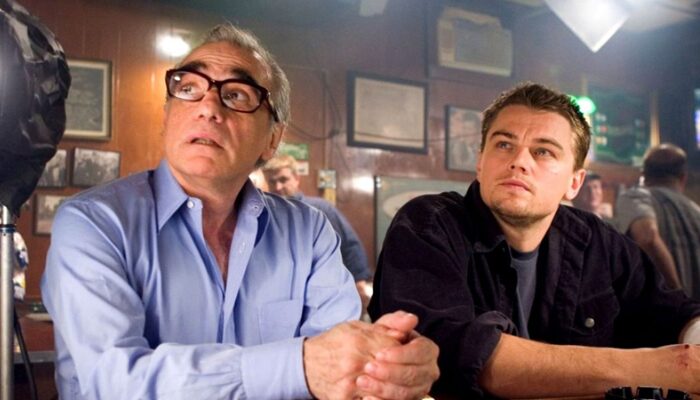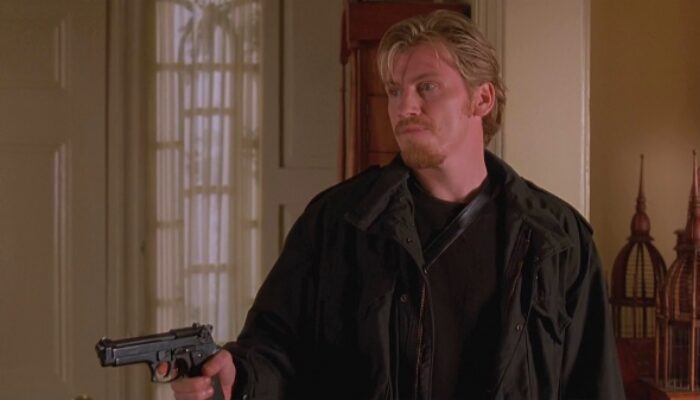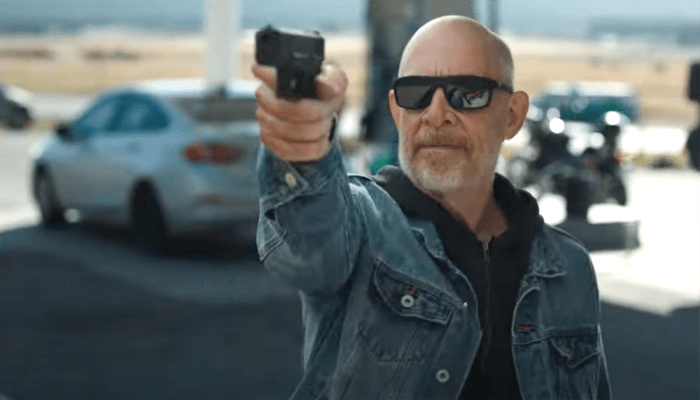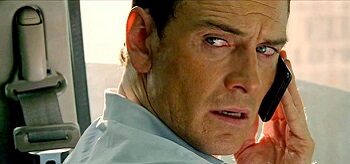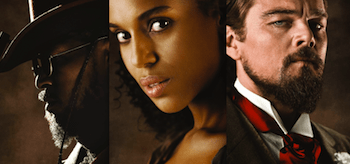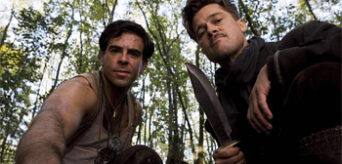Film Review: Inglourious Basterds
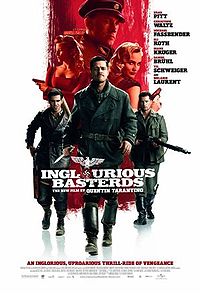
One of the best written scenes in Inglourious Basterds happens right at the beginning of the film. The scene involves Standartenfuher Hans Landa of the Waffen-SS / The Jew Hunter (Christoph Waltz) and Perrier LaPadite (Denis Menchet), a father of three daughters. Perrier is instantly trepidacious around Landa because of the mystique and rumors that propagate the French hillsides about him. It is only as the scene progresses that the viewer is shown that all is not what it seems with Landa’s insouciant manner. The more questions Landa asks, the more the viewer realizes what he already knows or assumes to be true. When Landa speaks about a hypothetic, Perrier knows he knows and the viewer knows he knows. His hard stare is its ardent harbinger.
It is showcase scenes of this nature that illustrate what a great writer Tarantino truly is and what a great actor Waltz is. Waltz literally steals every scene he is in during Inglourious Basterds and by the power of talent, becomes the most entertaining element in the scenes he inhabits.
Like so many Tarantino and Shyamalan films, there are character builder scenes in Inglourious Basterds, scenes that illuminate a person’s characteristics, pasts, and motivations for their current actions. There is the one just discussed for Standartenfuher Landa, Lt. Archie Hicox (Michael Fassbender) has one, as does Shosanna Dreyfus / Emmanuelle Mimieux (Melanie Lauret), and Staff Sergeant Donny Donowitz / The Bear Jew (Eli Roth). Roth was great in the Staff Sergeant Donowitz role; I loved hearing his Boston accent after he beats to death with a baseball bat Sergeant Werner Rachtman (Richard Sammel) and prances around in resplendent jubilation. All that being said, I would have loved to have seen Adam Sandler, who the character was originally written for, in the role. How much more interesting would The Bear Jew’s scenes have been with Sandler in the role, especially after seeing his dramatic turn in Punch Drunk Love?
When the Inglourious Basterds’ setting moves to the Le Gamarr Theater in Paris, owned by Emmanuelle Mimieux, the movie industry of 1944 is explored and names are thrown around that only the true cinephile will recognize. Tarantino is a student of his field and the cinema genre, as is evident with his naming of Inglourious Basterds’ characters, like First Lieutenant Aldo Raine / Aldo the Apache (Brad Pitt), after deceased actors.
Besides Waltz and Sturmbannfuhrer Dieter Hellstrom (August Diehl)’s performances, one of the primary strengths of Inglourious Basterds is the unexpected. Characters die brutally after being built up that the viewer may never have thought would be touched. In Lew Hunter’s Screenwriting 434 book, it says something to the effect of: Never fall in love with your characters because you will never want anything ruinous to befall them. Keeping this in mind, Inglorious Basterds has some wonderful and surprising death scenes for characters Tarantino seemed to have enjoyed creating and writing. During one scene in, the viewer probably believes a particular character is dead, which seems odd because of the way this character’s Vasily Grigoryevich Zaytsev exploits had been portrayed (people coming up for pictures, the movie within a movie, Nation’s Pride) and how this character had been distinguished because of it. Not only does this character put three shots into the chest of the person that shot them, while they are both on the ground dying, this person’s final act is to steady their Ruger hand pistol and deliver a fourth and most painful shot before “falling into shadow”.
Quentin Tarantino’s Inglourious Basterds is the third best film he has directed behind Pulp Fiction and Kill Bill. Writing-wise, it might be third or fourth behind Pulp Fiction, True Romance, and Kill Bill, (caveat: I have never read Tarantino’s original Natural Born Killers script before Oliver Stone rewrote it). Many will see Inglourious Basterds as Tarantino’s return to form after lackluster Death Proof and they would be right. Inglourious Basterds may be a fantasy World War II film but that is only the pedigree for a well-written, acted, and directed film.
Rating: 9.5/10
If you enjoyed this article, subscribe to us by Email or Full RSS Feed to be informed when we post new ones.
Related Articles
FilmBook's Newsletter
Subscribe to FilmBook’s Daily Newsletter for the latest news!

